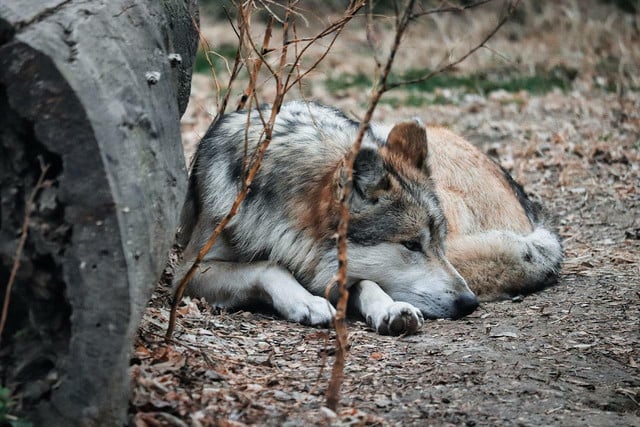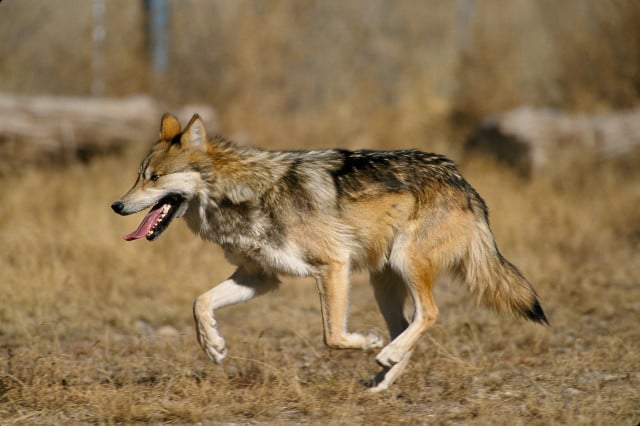After decades of being systematically hunted and killed, the Mexican gray wolf now needs to be saved from extinction. Learn more about the outlook for these animals.
Mexican gray wolves are a species of grey wolves that live through the southwest United States to Mexico. Since 1976, the Mexican gray wolf has been classified as an endangered species and can only be found in Arizona and New Mexico.
Living in packs, these social animals have complex hierarchies that work and live together and usually eat large-hooved animals. With a distinctive fur coat not found in any other wolf in America, they are also the most genetically distinct sect of gray wolves in America. This, however, is not a good thing for their survival against human-caused extinction. Only 163 Mexican gray wolves were found in the wild when counted in 2019. These wolves face extinction, but why and what is being done about it?
Mexican Gray Wolf: Endangered by Man



Endangered
Since 1915, the U.S. government has trapped and poisoned wolves due to their “disruption” of the cattle and livestock industries. This practice continued for decades as the government killed any wolves coming from Mexico and even sent a team to do the same abroad. These early practices are the main culprit in the endangerment of the Mexican gray wolf; their low numbers and reduced habitat are direct effects of these policies to save the cattle industry.
There is also a threat to their genetic diversity in the wild because of their low populations and the threat of inbreeding. However, when the United States passed the Endangered Species Act in 1973 and the listing of the species in 1976, the wolves were already extinct in the wild with only seven of the species confirmed alive and were then kept in captivity.
Possible Effects
The loss of an apex predator in any ecosystem will have negative health effects on the entire ecosystem. The extinction of the Mexican gray wolf would cause a trophic cascade: this is when the prey of these animals would multiply and unsustainably eat off of vegetation in the ecosystem. These patterns have been seen in other wolf extinctions, like in Yellowstone, and is damaging to the biodiversity and sustainability of an ecosystem. There is also the ethical question of allowing a species to go extinct because of actions from men – what other species will we allow to disappear and cause trophic cascade? There have been some attempts to curb the Mexican gray wolf endangerment.
Conserving the Mexican Gray Wolf



With no wild wolves left, the government began developing breeding programs in order to increase populations, and in 1982 the Mexican Grey Wolf Recovery Plan was approved. The purpose of the plan is to ensure the survival of the Mexican grey wolf through captive breeding programs, and reintroduce them back into their historic range.
Despite this, the plan does not give an actual recovery goal to remove them from the endangered species list. This means their intent in recovery is focused on reintroduction and an interim objective in helping their populations.
After their absence from the wild for almost two decades, the first Mexican grey wolf was returned to the wild in 1998 into a zone labeled by the U.S. Fish and Wildlife Service as the “Mexican Wolf Experimental Population Area”. It wasn’t until 2017 that they finally finished their first phase of the plan and now intend to recover the population to pre-endangered levels of population and survivability. They plan to redistribute the recovering two Mexican Grey Wolf populations across their historic habitats.
Using this map provided by U.S. Fish and Wildlife services, you can see the populations today of the Mexican grey wolves in recovery. According to their website, the USFW says their protective area and plan take the following into account: geographic distribution, population abundance, genetic management, as well as monitoring and adaptive management. Despite their recovery plan, the Mexican gray wolf is still considered an endangered species, and more needs to be done if there is a hope of saving this species.
Helping Mexican Gray Wolves
There are many different ways in which you can help this species of wolf bounce back from behavior change to volunteering with the animals. Ways to help include:
- Volunteer for places like Lobos or USFW
- Spread the information to people you know: in person, at work, online, etc.
- Stay vocal and supportive of legislation like the Endangered Species Act
- Reduce meat consumption so there are less cattle farms that need protection from these wolves.
- Donate to charities such as the Wildlands Network who work to protect the Mexican gray wolf.
Read more:
- Human-Environment Interaction: Definition & Examples
- What Happens if Bees Go Extinct? 10 Things That Would Disappear
- Are Bears Endangered? These 3 Species Are
Do you like this post?








